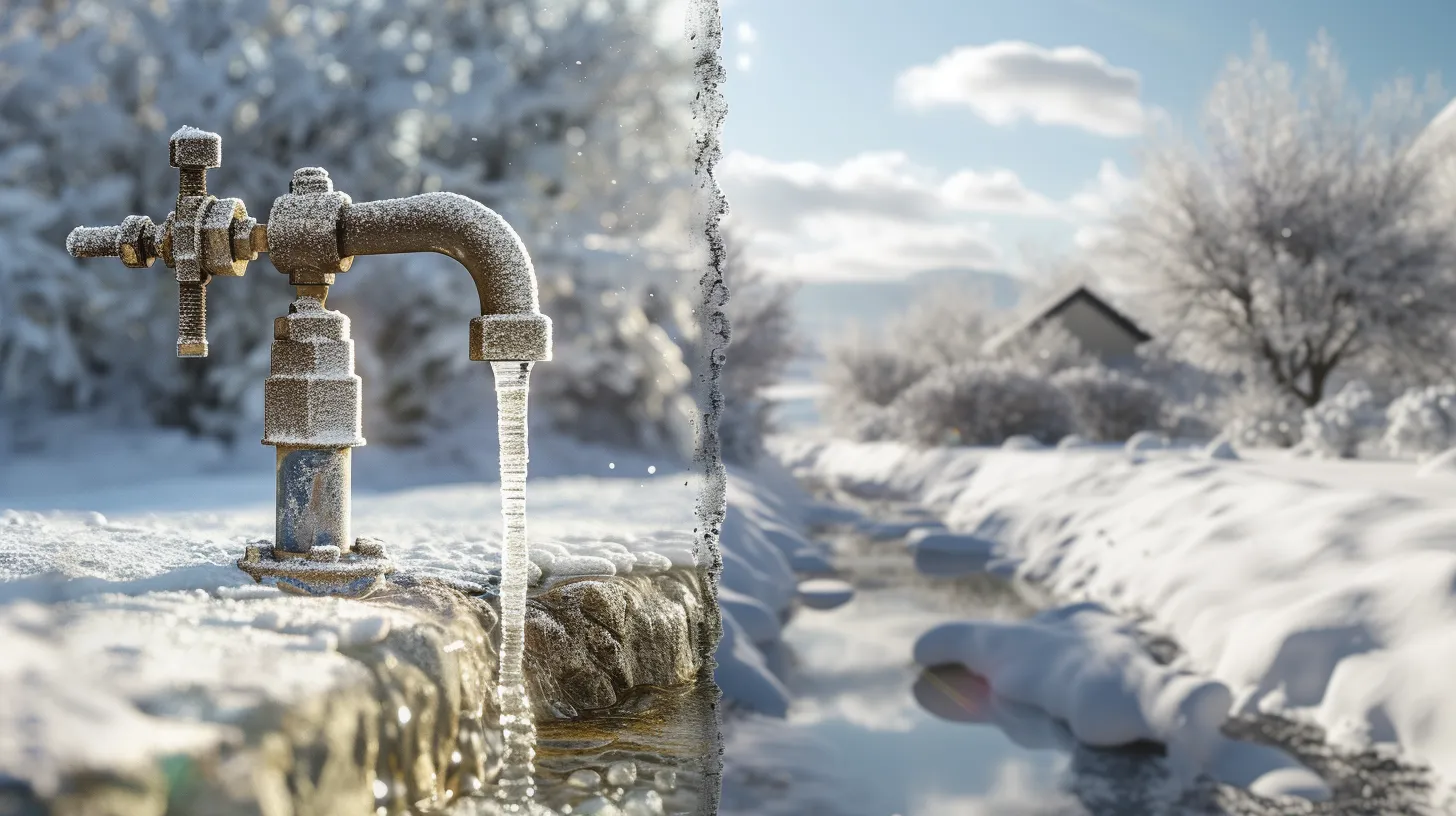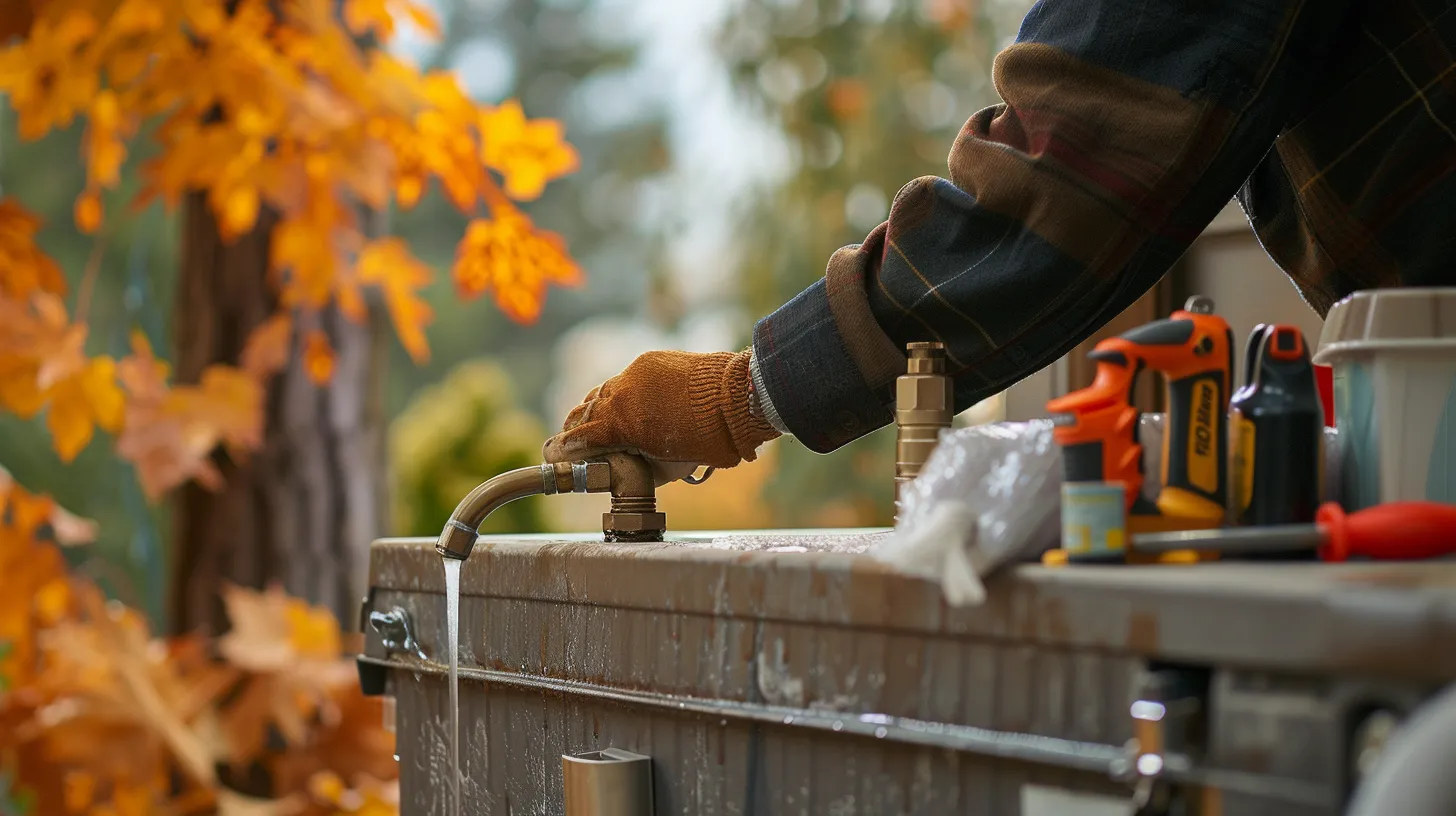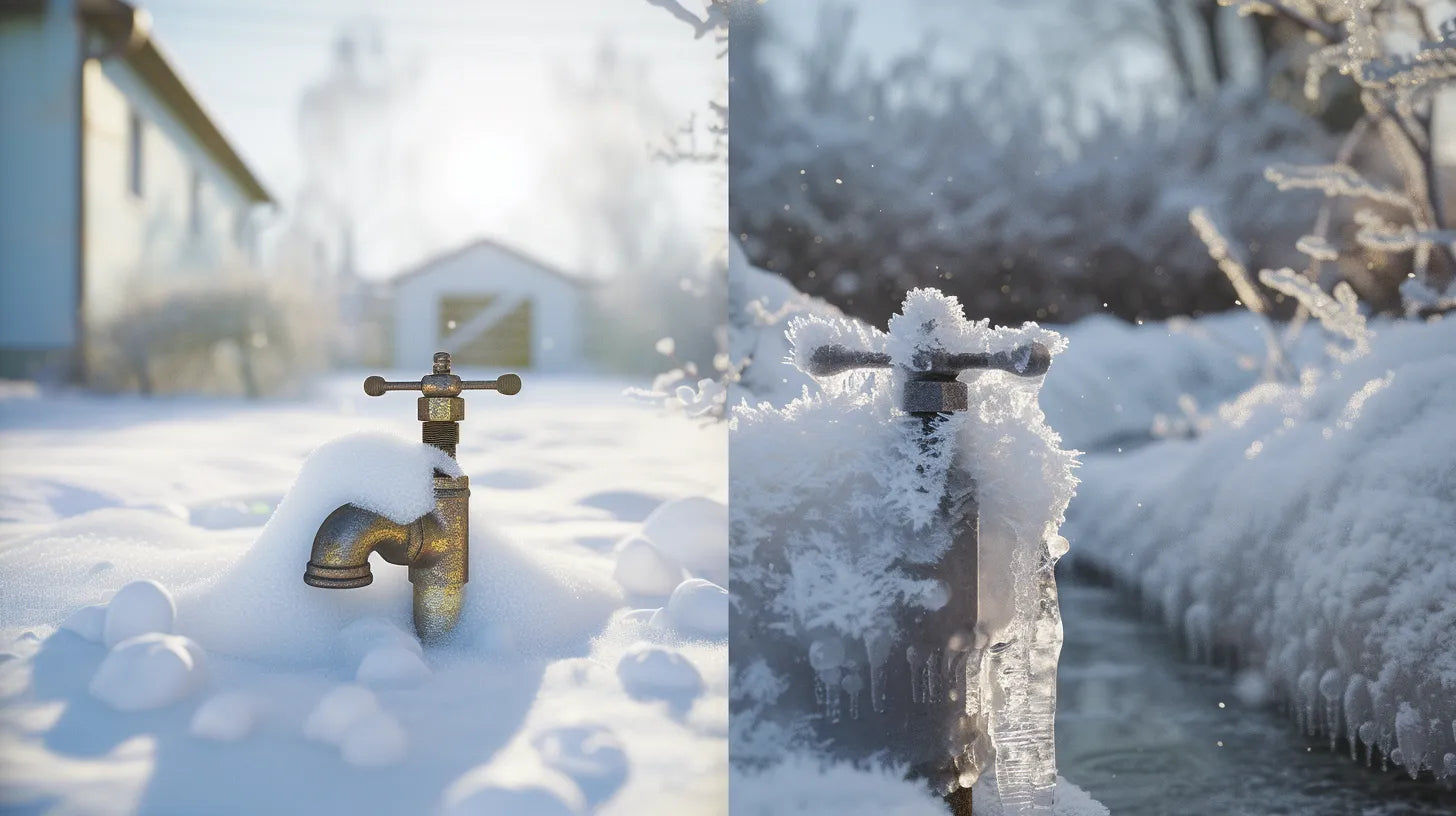As temperatures plummet, the question of whether to cover your outside faucets becomes not just a matter of routine maintenance but a crucial step in safeguarding your home against the ravages of winter. The risks of leaving faucets exposed to freezing conditions extend far beyond a mere inconvenience; they venture into the realm of potential financial and structural calamities through the bursting of pipes and subsequent water damage.
Yet, the solution, involving the selection and installation of appropriate faucet covers, is neither complex nor time-consuming. By exploring the necessity and methodology behind this precaution, homeowners can effectively mitigate these risks, ensuring their homes remain secure and functional even as the cold encroaches.
What remains to be seen is how this simple measure can significantly impact the overall integrity of a home's plumbing system.
Why Cover Your Faucets?
Covering your outside faucets is a preventative measure crucial in safeguarding against the costly repercussions of freezing and bursting pipes during cold weather. By implementing this simple yet effective strategy, homeowners can significantly mitigate the risks associated with plummeting temperatures and the havoc they wreak on outdoor plumbing systems. Faucet covers, whether commercially produced or crafted from household materials, offer a robust shield against frost and icy conditions, preserving the integrity and functionality of outdoor pipes.
The essence of protecting outdoor faucets cannot be overstated. It extends beyond merely averting water damage; it ensures the continuous efficiency of water flow and precludes the likelihood of unforeseen flooding scenarios that might arise from compromised piping systems. The utilization of insulated covers or inventive DIY solutions introduces an additional layer of defense, further fortifying faucets against the adversities of cold weather. This proactive approach not only saves homeowners from incurring expensive repair costs but also prolongs the operational lifespan of outdoor faucets, affirming the adage that an ounce of prevention is worth a pound of cure.
In essence, covering your outdoor faucets before the onset of cold seasons is a judicious step towards protecting your home's water system and maintaining peace of mind.
Risks of Unprotected Faucets

While the previous section highlighted the preventative measures to protect outdoor faucets, it is equally important to understand the risks associated with leaving these faucets uncovered during cold weather conditions. Unprotected faucets are vulnerable to freezing temperatures, which can lead to the freezing and bursting of pipes within the walls. This not only causes a partial or complete blockage of water flow but can also result in flooding, leading to expensive damages to your property.
The consequences of burst pipes from unprotected faucets emphasize the necessity of immediate action to prevent further damage and avoid costly repairs. Protecting your pipes, especially those leading to outdoor faucets, is essential to maintain your water supply during winter months. Utilizing an insulated cover to protect your outdoor faucets can effectively trap heat, thereby preventing freezing and ensuring the integrity of your water supply.
Choosing the Right Faucet Covers

Selecting the appropriate faucet cover is a critical step in safeguarding your outdoor water sources against freezing temperatures. In choosing the right covers, one must consider the severity of winter conditions they expect. Hard shell faucet covers provide excellent protection in regions prone to extreme cold. Their robust design shields against the harshest of freezing temperatures, making them an ideal choice for homeowners in these areas.
For those in milder climates, insulated pouch covers offer a suitable level of protection. These covers are designed to keep the cold at bay without the need for the heavy-duty protection that hard shell covers provide. Meanwhile, faucet socks serve as a convenient, temporary solution for protecting your faucets against frost. They are quick to install and effective for short periods of cold weather.
Ensuring that your faucet cover fits properly and is securely attached is vital for its effectiveness. A poorly fitted cover might not offer full protection, leaving your faucets vulnerable to freezing. Regular inspection and replacement of worn or damaged covers are essential maintenance steps. By choosing the right type of cover, fitting it correctly, and replacing it when necessary, you can protect your outdoor faucets from the ravages of freezing temperatures.
Installation Tips and Tricks

Having explored the importance of choosing the right faucet covers, it's crucial to focus on the best practices for their installation to ensure maximum protection against freezing temperatures. Proper installation not only enhances the lifespan of your outdoor pipes but also ensures they remain functional during cold spells.
Here are key installation tips and tricks for outdoor faucet covers:
-
Ensure Proper Fit and Secure Attachment : Select outdoor faucet covers that are properly fitting to your specific faucet types. Insulated pouch covers offer effective protection in moderate conditions. It's crucial that these covers are securely attached to prevent cold air from entering and causing freeze damage.
-
Detach Hoses Before Covering : For optimal protection, detach all hoses from faucets before covering. This allows the covers to fit more securely and prevents any residual water in the hose from freezing and potentially causing damage to the faucet or pipes.
-
Follow Manufacturer Instructions and Regular Maintenance : Adhere strictly to the manufacturer instructions for installation to guarantee effectiveness. Regular inspection and immediate replacement of damaged covers are imperative to maintain continuous protection against frost. These steps ensure your outdoor faucet covers provide effective protection through the winter season.
Extra Winterizing Steps

In addition to installing outdoor faucet covers, implementing extra winterizing steps is essential for comprehensive protection against freezing temperatures. While covering your outdoor faucets is a crucial first line of defense, understanding how faucet covers work to prevent freezing is just the beginning.
Using insulated covers offers an additional layer of protection, ensuring that the cold does not penetrate.
Beyond simply covering, insulating exterior pipes with specialized tubing is vital. This step prevents cold weather from damaging the pipes, keeping them secure throughout winter. Moreover, closing the shutoff valve inside your home and draining the water from the lines are indispensable actions. These steps help to ensure that no water remains in the pipes to freeze and expand, potentially causing damage.
For those in extremely cold climates, utilizing internal shutoff valves to drain water from outdoor faucets can further safeguard against the winter's chill. Adding insulation around the pipes and ensuring the covers are secured tightly can make a significant difference in protecting outdoor faucets.
These extra winterizing steps, combined with the initial use of faucet covers, work together to keep pipes from freezing and bursting, offering complete peace of mind during the cold months.










